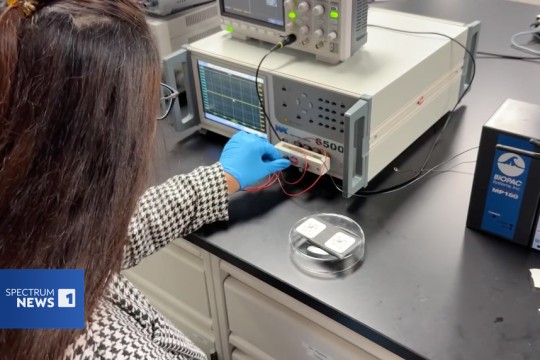All Sustainable Transportation Subsidies Shouldn't be Created Equal, Experts Say
Study examines consumer attitudes and overall policy environment for plug-in hybrid vehicles
A. Sue Weisler
James Winebrake
When it comes to pumping up the appeal of plug-in hybrid electric vehicles, some regions are more interested in the technology, and some consumers need more convincing—an important policy distinction when shaping subsidies, two energy policy experts say.
In a recent article in the scientific journal Energy Policy, James Winebrake, chair of the Department of Science, Technology and Society/Public Policy at Rochester Institute of Technology, and Steven Skerlos associate professor of engineering at the University of Michigan, make the case for a better way to target government subsidies aimed at promoting sustainable transportation technologies.
Winebrake and Skerlos argue that targeting consumers who live and drive in regions where the social benefits of electric–boosted cars are strongest, and recognizing the circumstances of consumers—such as their income, life stage and family size—give electric vehicles a better shot of penetrating the American auto market.
“The idea of a one-size-fits-all technology has failed us many times before in automotive policy,” says Skerlos, who also serves as director of Michigan’s Environmental and Sustainable Technologies Laboratory. “Electric vehicle technology that makes sense in urban areas where the grid is fairly clean may be less optimal compared to other technology approaches for areas of long distance rural driving. We want to get beyond the notion of a universal ‘silver bullet’ and understand where these vehicles will be the most applicable.”
“Subsidies for alternative fuel vehicles, such as plug-in hybrids, are needed in order to move our transportation sector away from petroleum and towards more sustainable technologies and fuels,” adds Winebrake, who is also co-director of the RIT Laboratory for Environmental Computing and Decision Making. “However, blanket subsidies such as those currently in place, are clearly sub-optimal. Instead, the federal government needs to target its subsidies in areas that maximize social benefit.”
Skerlos and Winebrake explain that plug-in hybrids can have the biggest environmental and energy effect in more densely populated regions that use low-carbon fuels for electricity production, such as renewable fuels, nuclear power or natural gas. They also argue that evidence indicates that high-income consumers are more likely to buy cutting-edge, green cars because cost is less of an issue so additional subsidies could be more effective if focused on assisting lower income consumers.
“The use of tax dollars to subsidize purchases of plug-in hybrids by people who would have bought them anyway should be questioned,” Skerlos notes.
Winebrake and Skerlos are actively working on the next phase of this research, which seeks to quantify consumer attributes in order to provide insights into the particular geographic regions and demographic groups that would be optimal targets for plug-in hybrid subsidies.













